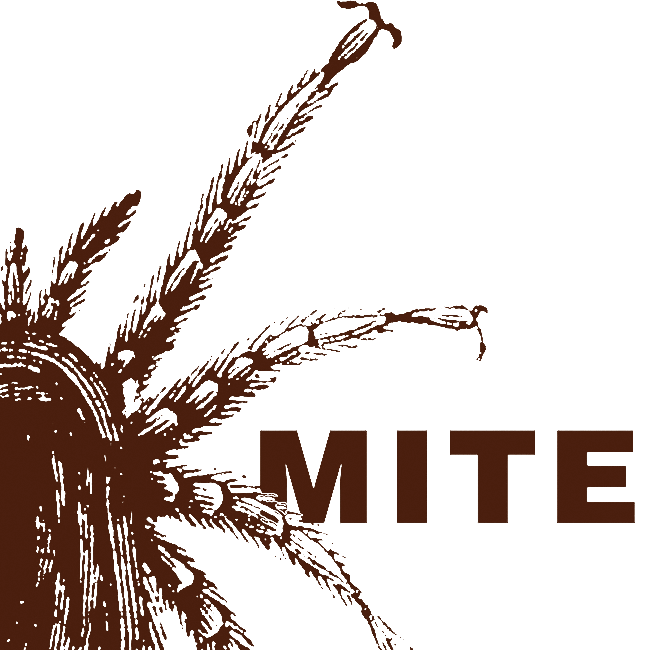Future Directions in Mite Elimination
For any of us who have experienced a massive mite infestation, scientific advances in mite elimination cannot happen quickly enough. And it seems there really is very little research money available for this poorly recognized problem. But advances do happen. Look around in science journals on those long sleepless nights when the bugs are biting. You may be surprised by what you find on the topic of future directions in mite elimination.
Despite low funding for research on mites, investigations proceed regarding Dermanyssus gallinae at the molecular level. This research has potential applications for better traps, better repellants, better acaricides, and, someday, a vaccine.
Use of Allomones to Repel Mites, and Kairomones to Attract Mites to a Trap
The current products used to trap mites are just sticky paper. Patrick Pageat filed a US patent application in 2004 regarding substances that repel and attract mites. His patent application describes a kairomone derived from the uropygeal gland of chickens, which attracts D. gallinae. The patent describes how this substance could be used to bait mite traps and improve determination that mites are present in an environment. The kairomone could also be used to attract mites to a trap, where they would be killed with a miticide.
The patent also describes the composition of an allomone (which repels D. gallinae) derived from the uropygeal gland of ducks. The patent application explains how this substance could be used to treat chickens to repel mites. The patent text also describes the extreme measures that are necessary to end an established infestation on a chicken farm, including burning the coop and treating the dirt in a wide radius of the coop site. A link to the patent is below.
http://www.google.com.ar/patents/US8828921
Improved Detection and Diagnosis:
John Frederick Huntley and Alasdair Justice Nisbet of the Moredun Research Institute in Scotland have applied for a patent on several genetic sequences in the D. gallinae genome. While their patent application focuses on potential utility in a vaccine, they also describe how antibodies developed based on this invention could be used in diagnostic tools to detect or diagnose D. gallinae infestations. A link to their application is below.
http://www.google.com/patents/WO2013014408A2?cl=en
While this work is promising, the ultimate goal should be a nucleic acid test that could diagnose a mite infestation before the host has even mounted an immune response, and continue to detect even if the ectoparasite modulates the host immune response. A nucleic acid test would have the added advantage of a providing a negative result once the infestation was finished (versus an antibody test, which would continue positive as long as the host manufactures antibodies to mite antigen).
Improved Pest Control:
Mite resistance to pesticides is a significant problem. A number of researchers and organizations are developing improved control methods for D. gallinae.
An ambitious example is the development of a program to lure mites with kairomones to a trap where they would be exposed to a fungus that destroys mites. Both steps are consistent with organic production of eggs. This Danish program would have the advantage of not being toxic to humans or other (non-mite) animals. More information can be found at the link below.
http://cordis.europa.eu/project/rcn/58986_en.html
Vaccine development:
Researchers are on the way to an approvable vaccine. There are numerous journal articles from various researchers and institutions regarding the development of a poultry vaccine against D. gallinae. For example, Moredun Research Institute in Scotland is developing a poultry red mite vaccine. A summary of their work can be found at the link below.
Currently Moredun is claiming a 35-40% effectiveness rate, and working to improve that efficacy.
Another example article on vaccine development by Harkle, Harrington, et al., is shown at the link below. In this study, chickens were immunized with the test vaccine, exposed to mites, and the efficacy was measured and found statistically significant.
http://www.ncbi.nlm.nih.gov/pubmed/19120169
The number of persons infested with arthropods such as mites and bedbugs seems to be increasing. Global warming, extensive world travel, increased demand for (potentially infested) used goods in a declining economy, and the backyard poultry movement all provide opportunities for parasitic arthropods to colonize human hosts. D. gallinae in particular has shown the genetic plasticity to adapt to a range of hosts. These changes, along with promising developments in research, suggest a business opportunity for an integrated ectoparasite-fighting company that would combat cave parasites at the “cave” or environment level (with improved traps and pesticides) and at the human host level (with diagnostics, vaccines and treatments).
